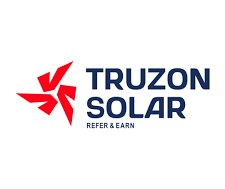
With ‘Skin in the Game,’ Scatec CEO Steers Erstwhile Solar Startup’s Global Push
Raymond Carlsen was on a plane from Oslo, Norway, to London in late 2018 when he got a call from an executive at Equinor ASA, informing him that the Norwegian oil company had become a major shareholder in Scatec ASA, the small solar developer that Carlsen had been leading for nearly a decade.
The news, made slightly awkward by the fact that he was on his way to meet with a competitor part-owned by BP PLC, another oil major, caught Carlsen unawares.
“I said ‘Oh, really? Well, that’s kind of interesting,'” Carlsen recalled in an interview, chuckling at the memory. “That was very funny. It took me by surprise.”
The move turned out to be one of a number of investments by oil majors in promising renewable energy companies. BP now owns 50% of Lightsource BP Renewable Energy Investments Ltd., the company Carlsen met in London that day, and Equinor has become Scatec’s largest shareholder with a stake of 13%.
Other large players in the industry, including major utilities such as Enel SpA and Iberdrola SA, have also hoovered up independent wind and solar developers in recent years.
That means many smaller companies now find themselves at a crossroads, facing the prospect of either growing quickly or being swallowed by the giants of the industry.
“Things have happened so fast,” Carlsen said, referring to the overall growth in the renewables sector. “There’s a lot of money out there.”
Carlsen had been running the global energy business at Norwegian industrial giant Aker ASA before he joined Scatec in 2009. He was about to join a private equity firm when he was introduced to Alf Bjørseth, the Norwegian billionaire entrepreneur who had founded Scatec just two years prior. At the time the two met, the company had roughly a dozen employees and just a single 9-MW solar park in Italy.
Since then, Carlsen has built Scatec into a sizable solar specialist with over 3,000 MW of utility-scale projects in emerging markets in South America, Africa and Asia — a niche that partly explains why the company has not been exposed to the same competitive dynamics as some of its peers, according to analysts.
But the CEO now has his sights on a bigger piece of the pie: Last year, Scatec bought hydropower producer SN Power AS for more than $1 billion, and in March Carlsen laid out a roughly €10 billion investment plan to grow Scatec’s green power portfolio fivefold by 2025 and expand into more high-profile markets.
“It’s natural for us to expand the strategy and become a multi-technology company,” Carlsen said, emphasizing that the market is widening globally. “It’s not going to cost us too much. It’s not going to be too risky. We have 90% of the competence that you need,” he said.
‘Skin in the game’
Investors have already amply rewarded the company’s growth to date: Since its listing on the Oslo Stock Exchange in late 2014, Scatec’s shares have climbed almost 350%, outperforming both diversified utilities and other pure-play renewables developers.
Jørgen Bruaset, director of energy research at Nordea, a Danish bank, said in an interview that “the jury is still out” on whether Scatec can pull off its push into hydropower.
But he said investors take heart from Carlsen’s own stake in the company: The 66-year-old CEO owns about 2%, worth over €80 million at today’s share price.

“He gets a lot of street credit for having skin in the game,” Bruaset said. “People have respect for management that have their own money at risk.”
In the early days of the company, Carlsen actually moved to Cape Town for several years to oversee construction of Scatec’s first three solar projects in South Africa.
Totaling 190 MW, the plants are small by today’s standards but were large for their time, said John Andersen Jr., CEO of Scatec Innovation AS, Bjørseth’s startup incubator and still Scatec’s second-largest shareholder.
“Those projects were, in the end, defining for the company. They were mission critical,” Andersen said in an interview. “Raymond wanted to make sure that we did what was necessary.”
The South African solar parks also exemplify Scatec’s well-honed approach: invest early in emerging markets that are not a key focus for major developers and take on the full project value chain, from early-stage development through to construction and long-term operation as a majority shareholder.
But that strategy, which analysts and executives acknowledge has been key to the company’s success, was not always so strictly defined. In the early days, the company, then known as Scatec Solar, invested in a large-scale U.S. solar farm with Alphabet Inc.’s Google LLC and pursued projects in Japan with Itochu Corp., an early investor that exited the business after Scatec’s IPO.
“The profile at listing was not as clear-cut,” said Andersen, who is Scatec founder Bjørseth’s son-in-law and had spent more than a decade at REC, another solar company founded by the billionaire, before returning to manage the family’s shareholdings. For the past seven years, he has also been chairman of Scatec.
“Over time, during those first few years and also in a dialogue with shareholders and potential investors, we came to realize that what made Scatec special is our ability to compete in these more complex markets,” Andersen said.
‘More complex situations’
Carlsen, who likes to emphasize that he built Scatec “brick by brick,” said broadening the company’s portfolio makes sense now that renewables have become a mainstream investment.
He sees hydropower as highly complementary to Scatec’s solar plants and points to additional income streams: Half of SN Power’s revenue in the Philippines, for instance, comes from providing grid services.
Scatec wants to double its existing capacity by year-end with large-scale solar plants in India, South Africa and Brazil, as well as smaller projects in Tunisia and Pakistan.
The company has already built its first onshore wind farm and is scoping out sites for offshore wind projects, for example in Vietnam. It even offers modular solar-and-battery units to replace diesel generators.

“You’re differentiating yourself from the pack,” Carlsen said of the multi-technology approach. Scatec has started putting floating solar plants on its hydro reservoirs and Carlsen wants to build batteries and even hydrogen production alongside new solar and wind parks.
“There are a lot of people who are experts on solar power, but they don’t have the capability or capacity to look into more complex situations,” he said. “And I think complexity fits our profile quite well. We like that. That’s why we have been very successful in emerging markets.”
When asked if Equinor or another company might eventually snap up Scatec to quickly beef up its renewables profile, Carlsen points out that his business might have already grown to a size that could put off potential suitors.
Scatec Innovation’s stake has shrunk from about a third at the time of the IPO to just above 12%. The company eventually sold its shares in REC, although Andersen emphasizes that he is still heavily involved in Scatec’s strategic direction. Equinor, which works with Scatec on some individual projects, declined to comment for this article.
In December 2019, when the company increased its stake in Scatec, it said the shareholding “remains an important long-term investment.”
“It would have been easier for them, for people to acquire us when we were smaller,” Carlsen said, adding that he is not expecting any offers. “We are going to continue to grow fast and continue to grow on our own merits,” he said.

















